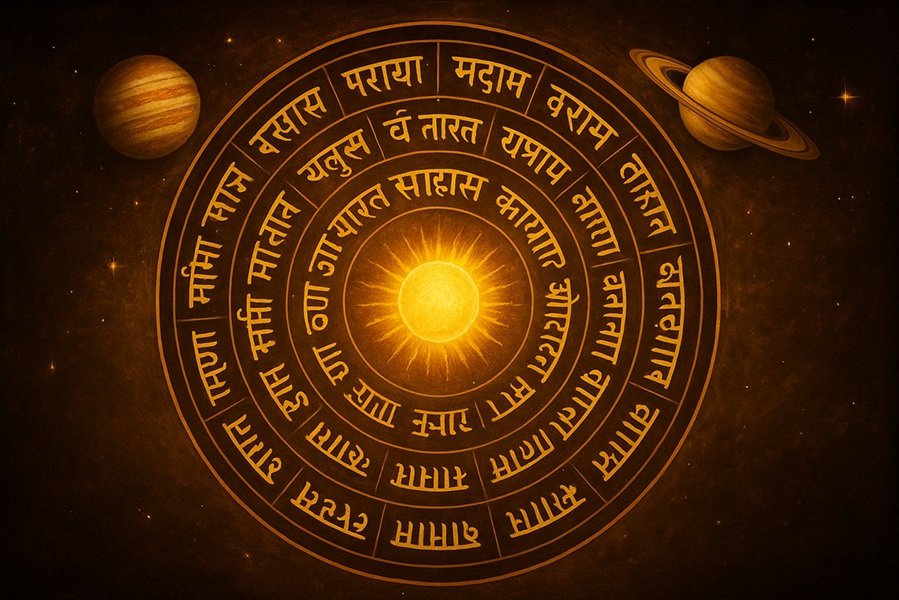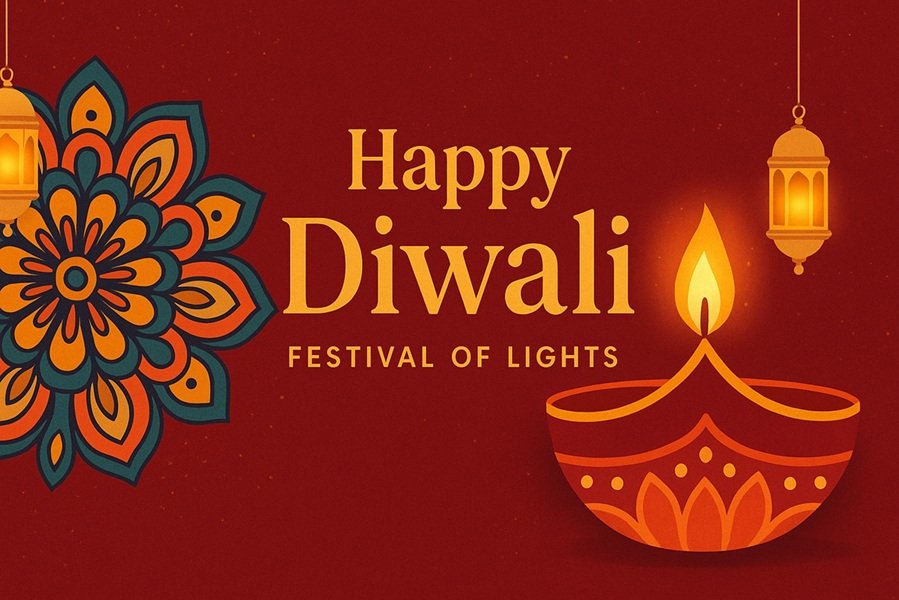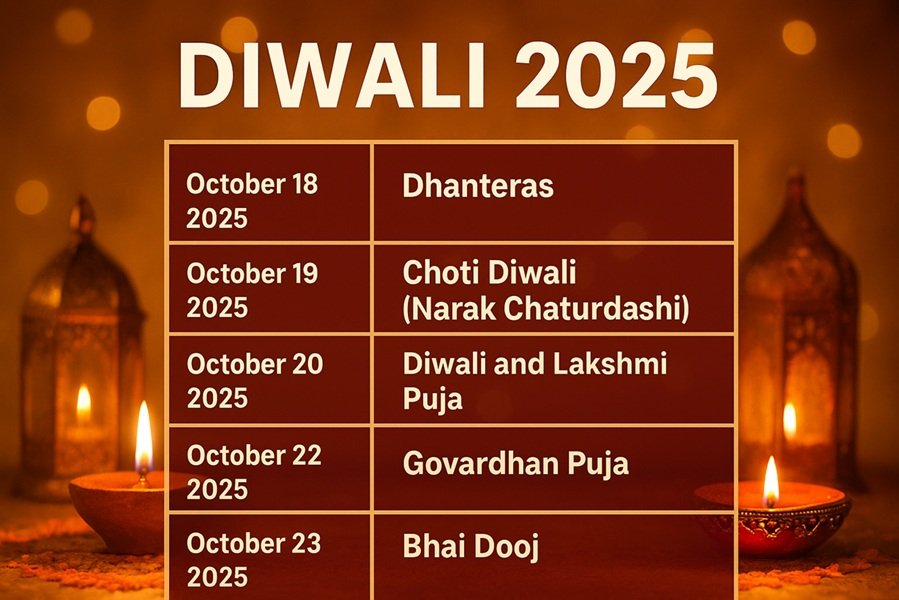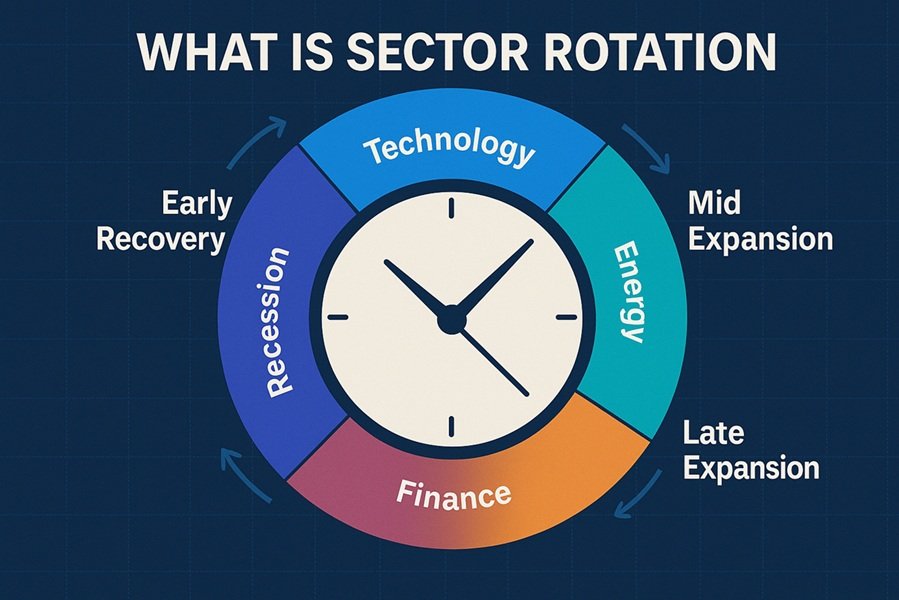
Introduction: What Is a Samvatsara in Vedic Astrology?
In Vedic astrology, a Samvatsara (संवत्सर) refers to one solar year or the time taken by Jupiter to transit through one zodiac sign. According to ancient Hindu astronomical texts, there are 60 distinct Samvatsaras that form a repeating cycle known as the Shashti Samvatsara Chakra (shashti meaning 60).
This 60-year cycle is used in the Hindu lunar-solar calendar (Panchang) to name each year. The cycle starts with Prabhava Samvatsara and ends with Kshaya Samvatsara, after which it repeats. Each Samvatsara has a unique name, significance, and astrological vibration influencing human affairs and global events.
Read This also: Understanding Panchang: Five Elements of the Hindu Calendar
Astronomical Basis of the Samvatsara Cycle
The system of 60 Samvatsaras originates from the Jupiter–Saturn conjunction cycle.
- Jupiter completes one revolution around the Sun in approximately 12 years,
- Saturn takes about 30 years.
The time taken for both to meet again at roughly the same point is around 60 years — forming the Samvatsara Chakra.
Hence, every 60 years, the planetary alignment approximately repeats, marking a new cycle of time and destiny according to Hindu cosmology.
List of the 60 Samvatsara Names
Below is the complete list of all 60 Samvatsara names in sequential order, as used in the Panchang and Vedic almanacs:
- Prabhava
- Vibhava
- Shukla
- Pramoda
- Prajapati
- Angira
- Shrimukha
- Bhava
- Yuva
- Dhata
- Ishwara
- Bahudhanya
- Pramathi
- Vikrama
- Vrisha
- Chitrabhanu
- Subhanu
- Tarana
- Parthiva
- Vyaya
- Sarvajit
- Sarvadhari
- Virodhi
- Vikriti
- Khara
- Nandana
- Vijaya
- Jaya
- Manmatha
- Durmukha
- Hemalambi
- Vilambi
- Vikari
- Sharvari
- Plava
- Shubhakrit
- Shobhakrit
- Krodhi
- Vishvavasu
- Parabhava
- Plavanga
- Kilaka
- Saumya
- Sadharana
- Virodhakrit
- Paridhavi
- Pramadi
- Aananda
- Rakshasa
- Nala
- Pingala
- Kalayukta
- Siddharthi
- Raudra
- Durmati
- Dundubhi
- Rudhirodgari
- Raktaksha
- Krodhana
- Kshaya
Meaning and Symbolism of Samvatsara Names
Each Samvatsara name carries a symbolic meaning and is believed to influence the worldly and personal events occurring in that year. Let’s understand the symbolic essence of some of these names:
| Samvatsara Name | Meaning | Symbolic Indication |
|---|---|---|
| Prabhava | Beginning, creation | Start of new cycles, creativity, innovation |
| Vibhava | Prosperity | Abundance and wealth |
| Shukla | Pure, bright | Clarity and righteousness |
| Pramoda | Joy, delight | Happiness and celebration |
| Prajapati | Creator | Productive year, growth |
| Angira | Sage Angiras | Wisdom, learning, spiritual rise |
| Shrimukha | Auspicious-faced | Favorable beginnings, diplomacy |
| Bhava | Existence | Balance and stability |
| Yuva | Youthful | Energy, enthusiasm, new ventures |
| Dhata | Sustainer | Preservation, material stability |
| Ishwara | Lord, ruler | Power, leadership, control |
| Bahudhanya | Much grain | Agricultural prosperity |
| Vikrama | Valor | Courage and progress |
| Chitrabhanu | Bright light | Recognition, fame |
| Vyaya | Expenditure | Financial caution needed |
| Sarvajit | Conqueror | Success and dominance |
| Virodhi | Opposition | Conflicts and political strife |
| Vijaya | Victory | Success in endeavors |
| Manmatha | God of love | Romantic and creative pursuits |
| Durmukha | Harsh-faced | Arguments, misunderstandings |
| Vikari | Changeable | Transformation, instability |
| Plava | Floating | Travel, exploration |
| Shubhakrit | Good deeds | Dharma, compassion, prosperity |
| Krodhi | Angry | Aggression, restlessness |
| Vishvavasu | Universal wealth | Economic recovery |
| Parabhava | Decline | Spiritual test, fall of ego |
| Aananda | Bliss | Joy, success, optimism |
| Rakshasa | Demonic | Disharmony, hidden enemies |
| Siddharthi | Accomplished | Achievement, fulfillment |
| Raudra | Fierce | Revolutionary, intense changes |
| Durmati | Evil-minded | Chaos, corruption, moral test |
| Krodhana | Angry one | Global tension, impulsive actions |
| Kshaya | Destruction | Endings, renewal of cycles |
The 60-Year Samvatsara Cycle and Its Repetition
After Kshaya Samvatsara, the cycle begins again with Prabhava.
This cyclic nature represents the Hindu concept of time as ananta (infinite and repeating). It is not linear but rhythmic — just like the cosmic dance of Shiva — creation, preservation, and destruction repeating eternally.
Every person’s life, according to astrology, is influenced by the Samvatsara in which they are born. Just as your Nakshatra and Rashi influence your personality, your birth Samvatsara also carries karmic and cosmic energy.
Grouping of Samvatsaras by Nature
The 60 Samvatsaras can also be grouped according to their qualities and effects:
1. Auspicious (Shubha) Samvatsaras
These bring prosperity, peace, and spiritual elevation:
- Prabhava, Vibhava, Shukla, Pramoda, Prajapati, Angira, Shrimukha, Bhava, Dhata, Ishwara, Bahudhanya, Vijaya, Jaya, Manmatha, Shubhakrit, Shobhakrit, Aananda, Siddharthi.
2. Inauspicious (Ashubha) Samvatsaras
These years are believed to bring obstacles, conflicts, or global unrest:
- Mrityu, Vyaya, Virodhi, Vikriti, Khara, Durmukha, Krodhi, Raudra, Durmati, Rakshasa, Krodhana, Kshaya.
3. Mixed (Mishra) Samvatsaras
These may bring both progress and challenges:
- Kalayukta, Vilambi, Vikari, Sharvari, Plava, Vishvavasu, Parabhava, Nala, Pingala.
Cultural and Calendar Significance
In India, the Samvatsara names are used in regional calendars like:
- Shaka Samvat (used in official Indian calendar)
- Vikram Samvat (used in North and Western India)
- Tamil and Telugu Panchangams, where every year is called by its Samvatsara name.
For example:
- The year 2024–2025 (Chaitra to Chaitra) is Krodhi Samvatsara.
- The next (2025–2026) will be Vishvavasu Samvatsara.
In South India, especially in Andhra Pradesh, Tamil Nadu, and Karnataka, New Year (Ugadi, Puthandu, Vishu) is celebrated according to the Samvatsara change.
Spiritual Insight of the Samvatsara Cycle
The 60-year Samvatsara cycle mirrors the journey of the soul through experiences — creation, expansion, learning, conflict, realization, and renewal.
Each Samvatsara brings an opportunity to balance karma and align with dharma (righteous action).
Astrologers often analyze:
- The Samvatsara name
- The planetary lords (Jupiter and Saturn transits)
- And Nakshatra position
to predict global trends, monsoon patterns, political changes, and social transformation.
Table: Quick Reference of Samvatsara Sequence
| # | Name | # | Name |
|---|---|---|---|
| 1 | Prabhava | 31 | Hemalambi |
| 2 | Vibhava | 32 | Vilambi |
| 3 | Shukla | 33 | Vikari |
| 4 | Pramoda | 34 | Sharvari |
| 5 | Prajapati | 35 | Plava |
| 6 | Angira | 36 | Shubhakrit |
| 7 | Shrimukha | 37 | Shobhakrit |
| 8 | Bhava | 38 | Krodhi |
| 9 | Yuva | 39 | Vishvavasu |
| 10 | Dhata | 40 | Parabhava |
| 11 | Ishwara | 41 | Plavanga |
| 12 | Bahudhanya | 42 | Kilaka |
| 13 | Pramathi | 43 | Saumya |
| 14 | Vikrama | 44 | Sadharana |
| 15 | Vrisha | 45 | Virodhakrit |
| 16 | Chitrabhanu | 46 | Paridhavi |
| 17 | Subhanu | 47 | Pramadi |
| 18 | Tarana | 48 | Aananda |
| 19 | Parthiva | 49 | Rakshasa |
| 20 | Vyaya | 50 | Nala |
| 21 | Sarvajit | 51 | Pingala |
| 22 | Sarvadhari | 52 | Kalayukta |
| 23 | Virodhi | 53 | Siddharthi |
| 24 | Vikriti | 54 | Raudra |
| 25 | Khara | 55 | Durmati |
| 26 | Nandana | 56 | Dundubhi |
| 27 | Vijaya | 57 | Rudhirodgari |
| 28 | Jaya | 58 | Raktaksha |
| 29 | Manmatha | 59 | Krodhana |
| 30 | Durmukha | 60 | Kshaya |
Conclusion: The Eternal Cycle of Time
The Samvatsara system reflects how ancient India perceived time — not as a straight line, but as a living, breathing cycle of creation, preservation, and transformation. Each year brings its own lessons, opportunities, and karmic imprints.
Understanding your birth Samvatsara or the current Samvatsara helps align your goals, rituals, and spiritual practices with cosmic timing, fostering balance and prosperity.








